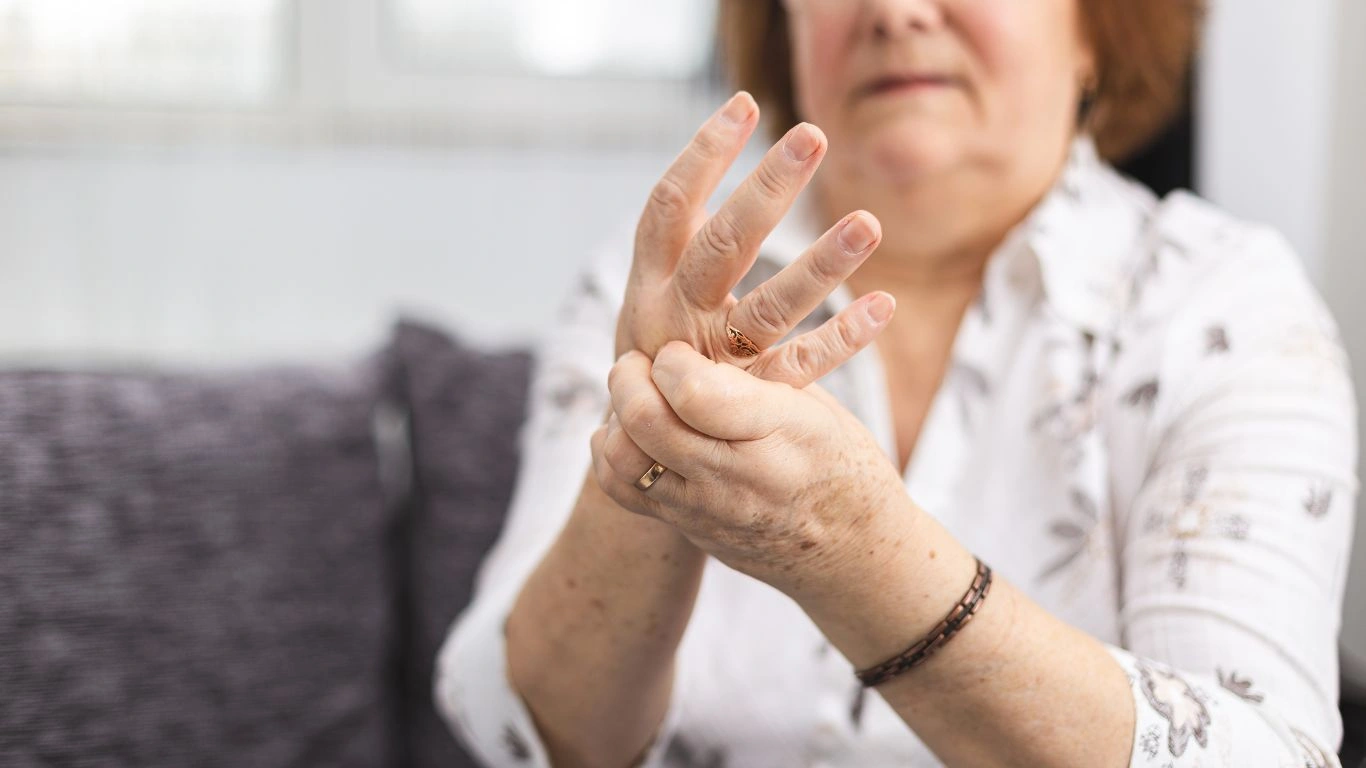Rheumatoid Arthritis Muscle Wasting: Proven Prevention Tips You Need
Living with rheumatoid arthritis can feel like navigating a daily obstacle course, especially when you’re trying to stay ahead of complications like muscle wasting. As a Rheumatology Nurse Practitioner, I’ve seen firsthand how quickly strength and mobility can slip away if we don’t stay proactive. Rheumatoid arthritis and how to prevent muscle wasting isn’t just a clinical topic for me—it’s something I talk about with my patients almost every single day. If you’ve ever wondered why those muscles seem to shrink or why you feel weaker over time, you’re definitely not alone. Let’s dive into what’s really going on and how you can take control, starting today.
What Is Rheumatoid Arthritis and Why Does Muscle Wasting Happen?

Rheumatoid arthritis (RA) isn’t just about joint pain—it’s a full-body autoimmune condition that triggers chronic inflammation. Over time, that inflammation doesn’t just attack the joints; it also chips away at muscles. I like to explain it to my patients this way: if your body is busy fighting a battle internally, it’s going to steal resources from your muscles to keep up the fight. Not to mention, when moving hurts, we tend to move less, and that inactivity accelerates muscle loss.
Some reasons why muscle wasting happens in RA:
- Chronic inflammation damages muscle tissues directly.
- Pain and joint stiffness make exercise difficult.
- Fatigue leads to reduced activity levels.
- Medications like corticosteroids can contribute to muscle breakdown.
In my clinical practice, I often remind folks that muscle wasting doesn’t happen overnight. It’s a sneaky, gradual process—but the good news is, with the right strategies, we can outsmart it!
Early Signs of Muscle Wasting in Rheumatoid Arthritis You Shouldn’t Ignore

Sometimes the earliest signs are so subtle that they get brushed off. Trust me, I’ve seen even the most attentive patients miss the first clues. It’s not just about feeling weak—it can show up in ways you wouldn’t expect.
Common early red flags include:
- Feeling like everyday tasks take more effort—like carrying groceries or climbing stairs.
- Noticing a little more sagging or softness in the arms or legs—even if weight stays the same.
- Clothes feeling looser in areas like thighs and arms without significant weight loss.
- More frequent muscle cramps or stiffness—even without extra activity.
When I chat with my patients about these symptoms, I always emphasize: Don’t wait for things to get worse before acting. Early intervention is our secret weapon!
How to Prevent Muscle Wasting with Rheumatoid Arthritis: Proactive Tips That Actually Work

Okay, here’s the exciting part: preventing muscle wasting isn’t just possible—it’s absolutely doable with the right moves (pun intended!). Every time I sit down with a newly diagnosed patient, we lay out a game plan that’s realistic and sustainable. Here’s the approach I swear by, both professionally and personally:
1. Prioritize Low-Impact, Muscle-Building Exercise
One big myth is that people with RA should “rest” as much as possible. Nope! Smart, tailored exercise is one of the most powerful tools to keep muscles strong. Think:
- Gentle strength training with resistance bands
- Swimming or water aerobics (a personal favorite I often recommend!)
- Chair yoga and modified Pilates
I tell my patients to start slow, even just 5-10 minutes a day. Progress is progress, no matter how small it seems at first.
2. Fuel Your Muscles with Proper Nutrition
Inflamed muscles need serious nourishment. I often work with dietitians to help patients fine-tune their diets. Some essentials for muscle maintenance:
- Lean proteins like chicken, fish, tofu, and eggs
- Omega-3 fatty acids from salmon, chia seeds, and walnuts to fight inflammation
- Vitamin D and calcium to support muscle and bone health
- Plenty of hydration (because muscles need water just as much as joints do!)
And trust me, small upgrades like swapping in a protein smoothie after a workout can make a world of difference over time.
3. Keep Inflammation in Check (As Much as Possible)
Of course, controlling the root cause—chronic inflammation—is critical. I always encourage sticking closely to prescribed treatment plans, whether that’s DMARDs (Disease-Modifying Anti-Rheumatic Drugs), biologics, or other meds your rheumatologist recommends.
Other little inflammation-fighting habits that can help?
- Prioritizing sleep (aim for a solid 7-9 hours if you can)
- Practicing gentle stress management like deep breathing, meditation, or light stretching
- Keeping up with regular medical check-ins, even when symptoms seem “stable”
Over the years, I’ve seen how even minor tweaks to daily routines can help patients feel stronger, more energetic, and more confident managing their RA long-term.
Targeted Physical Therapy Approaches for Muscle Strength in Rheumatoid Arthritis

When patients ask me, “Tarra, how do I get strong again without hurting myself?” — my first thought is usually physical therapy. Partnering with a skilled PT who understands rheumatoid arthritis and how to prevent muscle wasting can honestly change the game.
Physical therapists don’t just hand you a cookie-cutter workout plan. They assess your individual joint stability, muscle imbalances, and mobility needs to craft something safe and effective. Plus, they’re magicians when it comes to teaching modifications—trust me, there’s almost always a way to work around painful joints while still building strength elsewhere!
Some of my favorite PT strategies for RA include:
- Isometric exercises—where you contract muscles without moving joints (amazing during flares!)
- Closed kinetic chain exercises—think wall sits or modified push-ups, which stabilize joints better
- Assisted range-of-motion movements—using tools like pulleys or resistance bands
Honestly, the right PT program can build up strength and confidence faster than you might expect. I love seeing the lightbulb moment when a patient realizes they’re stronger than they thought!
Supplements and Nutrition Tweaks That Support Muscle Health

Let’s be real: food is medicine, especially when it comes to preventing muscle wasting with RA. Over the years, I’ve recommended small, sustainable nutrition shifts that support muscle recovery without overwhelming busy lives.
Here are a few simple upgrades I often suggest:
- Whey or plant-based protein powders—a quick way to boost daily intake without heavy meals
- Turmeric with black pepper—a natural anti-inflammatory powerhouse
- Collagen peptides—some emerging evidence shows they may help joint and muscle health
- Magnesium-rich foods like spinach, almonds, and avocados to reduce muscle cramps
Of course, supplements aren’t a replacement for a healthy diet, but in my experience, they can be a fantastic sidekick. Always chat with your healthcare team before starting anything new—especially since RA meds can sometimes interact with supplements.
Quick snack ideas to fuel muscle repair:
- Greek yogurt with berries and chia seeds
- Hard-boiled eggs and a handful of walnuts
- Edamame sprinkled with sea salt
- Protein smoothies with spinach and banana
Easy, portable, and packed with the good stuff your muscles are craving!
The Role of Consistency: Why Little Habits Matter More Than Big Changes

If there’s one thing I wish I could shout from the rooftops, it’s this: consistency beats intensity every time. So many of my patients initially think they need to launch into full-blown gym routines to prevent muscle wasting. Nope. It’s the little, everyday actions that stack up and create real, lasting strength over time.
Here’s what that looks like in real life:
- Doing 5 minutes of resistance band exercises every morning
- Choosing to walk an extra block to stretch the legs
- Adding an extra serving of protein to dinner
- Setting a reminder to stretch before bed
It might not seem like much day-to-day, but let me tell you—over months and years, those small decisions add up to massive wins. I’ve had patients who could barely lift a jug of milk when we first met, and now they’re confidently carrying groceries, playing with grandkids, and living life without fear of frailty. That’s the magic of consistency.
Real Patient Success Stories: How Small Changes Beat Muscle Wasting
One of my favorite memories is of a woman in her early sixties who was terrified when she first got her RA diagnosis. She had already noticed her arms getting smaller and felt defeated before we even started. Together, we built a basic plan: light strength training twice a week, daily stretching, upping her protein intake, and sticking to her RA meds.
Fast forward a year: she was stronger, had more endurance, and even picked up a new hobby—gardening! She told me, “I feel like I took my body back.” Moments like those are exactly why I love this work.
Another young man I worked with was struggling to stay active after a bad flare. We focused on water aerobics and simple chair workouts. Now? He’s back to hiking on weekends! His story is a great reminder that preventing muscle wasting doesn’t mean doing high-intensity workouts—it means finding what works for you and sticking with it.
Some takeaways from real-life success stories:
- Start small. Tiny steps add up to big transformations.
- Stay flexible. Some days are harder—modify but don’t quit!
- Celebrate every win. Seriously, every rep counts!
From where I stand, preventing muscle wasting in rheumatoid arthritis isn’t just a physical journey—it’s a mental and emotional one too. Giving yourself grace, patience, and a solid game plan makes all the difference in the world.
Home Exercise Ideas to Fight Muscle Wasting (Even on Flare Days)

One thing I always tell my patients is this: you don’t need a fancy gym membership to protect your muscles. In fact, some of the most effective routines happen right in your living room, between laundry loads or while binge-watching your favorite shows.
Of course, living with rheumatoid arthritis and how to prevent muscle wasting means being flexible. Some days your body’s ready to push a little, and other days… not so much. That’s totally normal! Having a handful of “go-to” home exercises means you can keep moving no matter what kind of day you’re having.
Simple at-home exercises I love recommending:
- Seated marching—Sit tall in a sturdy chair and lift one knee at a time like you’re marching. Great for hip flexors and core!
- Wall push-ups—Stand a few feet from the wall and use it for resistance. Super joint-friendly but surprisingly effective.
- Mini-squats—Hold onto the back of a chair and do small squats. No need to go deep—just a slight bend works wonders.
- Resistance band bicep curls—Use a light resistance band to work arms without straining sore joints.
- Gentle stretching—Shoulders, hamstrings, calves…keep it light and easy to prevent stiffness.
Sometimes I’ll even sneak in a few stretches or marches while waiting for my coffee to brew. Little things really add up when it comes to muscle health!
How Occupational Therapy Can Help Preserve Strength and Independence

While physical therapy often gets the spotlight, I can’t stress enough how valuable occupational therapy (OT) can be for folks battling RA-related muscle loss. Honestly, OT has saved the day for so many of my patients when it comes to staying independent and active at home.
Occupational therapists focus on adapting daily activities to match your abilities. They’re not just about therapy exercises—they’re also about real-life function.
Some awesome ways OT can help:
- Teaching energy conservation techniques to avoid muscle over-fatigue
- Recommending assistive devices like jar openers, ergonomic pens, and adaptive kitchen tools
- Setting up safer home environments to prevent falls (which can spiral into major setbacks!)
- Guiding modified dressing, grooming, and bathing techniques when joints are stiff or sore
I’ll never forget one of my patients who was ready to give up cooking because of wrist pain. An OT introduced her to special adaptive kitchen tools—and now she’s back to baking for her grandkids every Sunday. Never underestimate the power of the right tools!
The Emotional Side of Preventing Muscle Wasting: Staying Motivated
Let’s be real for a second: staying motivated when you’re living with rheumatoid arthritis is tough. Muscle wasting isn’t just a physical battle—it hits emotionally too. Some days, it can feel like you’re pushing a boulder uphill with no end in sight.
Over the years, I’ve learned (and taught) a few tricks to stay in the fight mentally:
Mindset strategies that make a difference:
- Celebrate small wins. Walked an extra block today? High-five yourself!
- Set mini goals. Instead of “get stronger,” try “do 5 wall push-ups after breakfast.”
- Track progress. Photos, journals, even simple checklists—it’s so motivating to see how far you’ve come.
- Lean on support. Friends, online communities, a trusted health provider…you’re not alone.
I often remind my patients that it’s okay to have bad days. What matters most is getting back on track. Progress isn’t linear—but over time, those valleys lead to mountains you didn’t even know you could climb.
Helpful Resources for Muscle Health and Rheumatoid Arthritis
Want to dive deeper into keeping your muscles strong and joints happy? Here are a few trustworthy places I always recommend:
- National Institutes of Health (NIH) – Incredible source for the latest RA research and treatment updates.
- Arthritis Foundation – Tons of practical tips, exercise guides, and community support.
- Health.com – Easy-to-digest articles about lifestyle strategies for living with RA.
Remember, education is empowerment. The more you know, the more tools you have to fight back against muscle wasting—and win!
Disclaimer
This content is for informational purposes only and is not intended as a substitute for professional medical advice, diagnosis, or treatment. Always seek the guidance of your rheumatologist, primary care provider, or qualified health professional with any questions you may have regarding a medical condition or treatment plan. Never disregard professional advice or delay in seeking it because of something you have read here.

Tarra Nugroho is a dedicated Nurse Practitioner with a strong foundation in family and preventive care. She brings both compassion and clinical expertise to her practice, focusing on patient-centered care and health education. As a contributor to Healthusias.com, Tarra translates medical knowledge into clear, empowering articles on topics like women’s health, chronic disease management, and lifestyle medicine. Her mission is simple: help people feel seen, heard, and informed—both in the clinic and through the content she creates. When she’s not caring for patients, Tarra enjoys weekend hikes, plant-based cooking, and curling up with a good health podcast.






